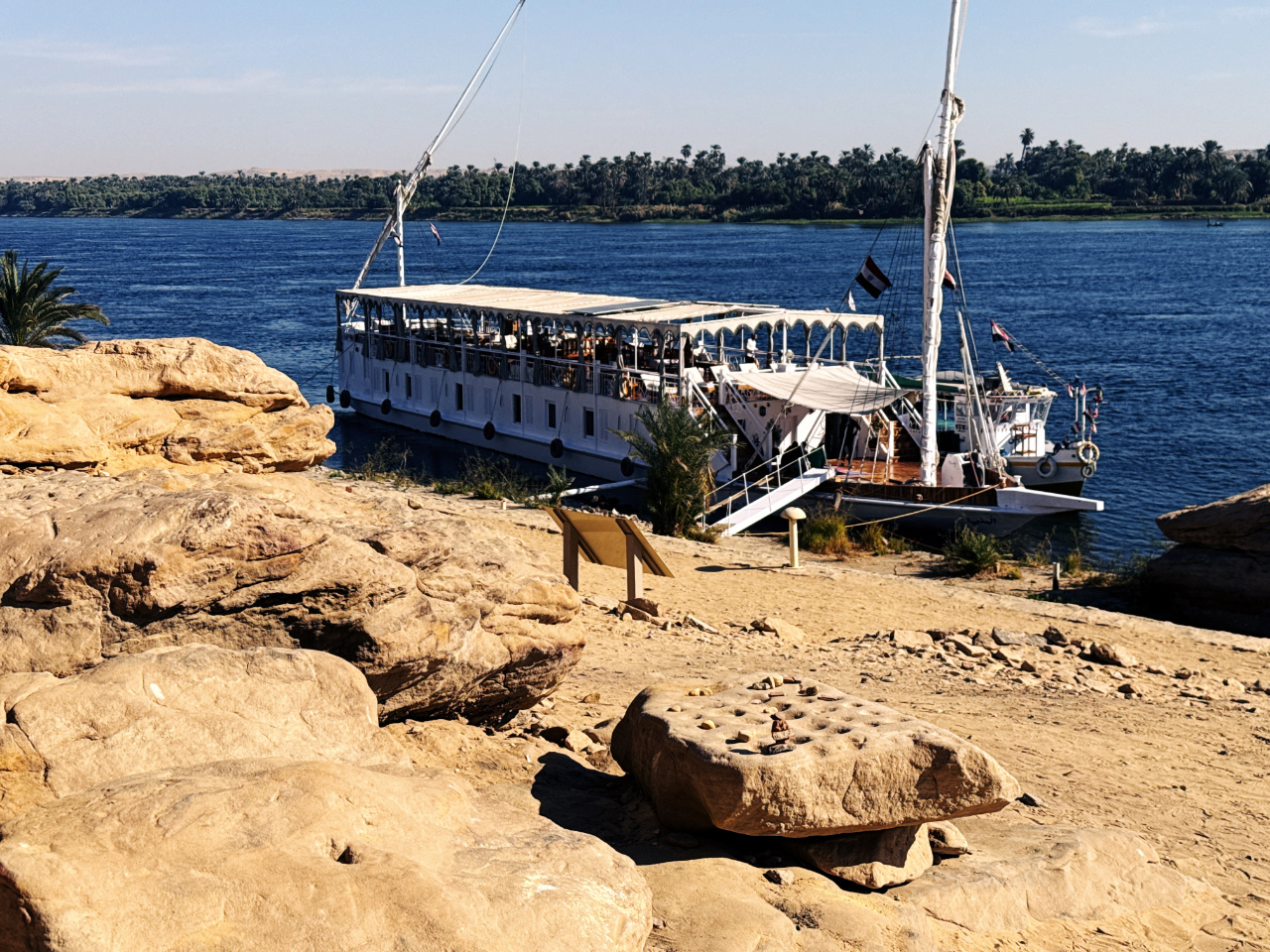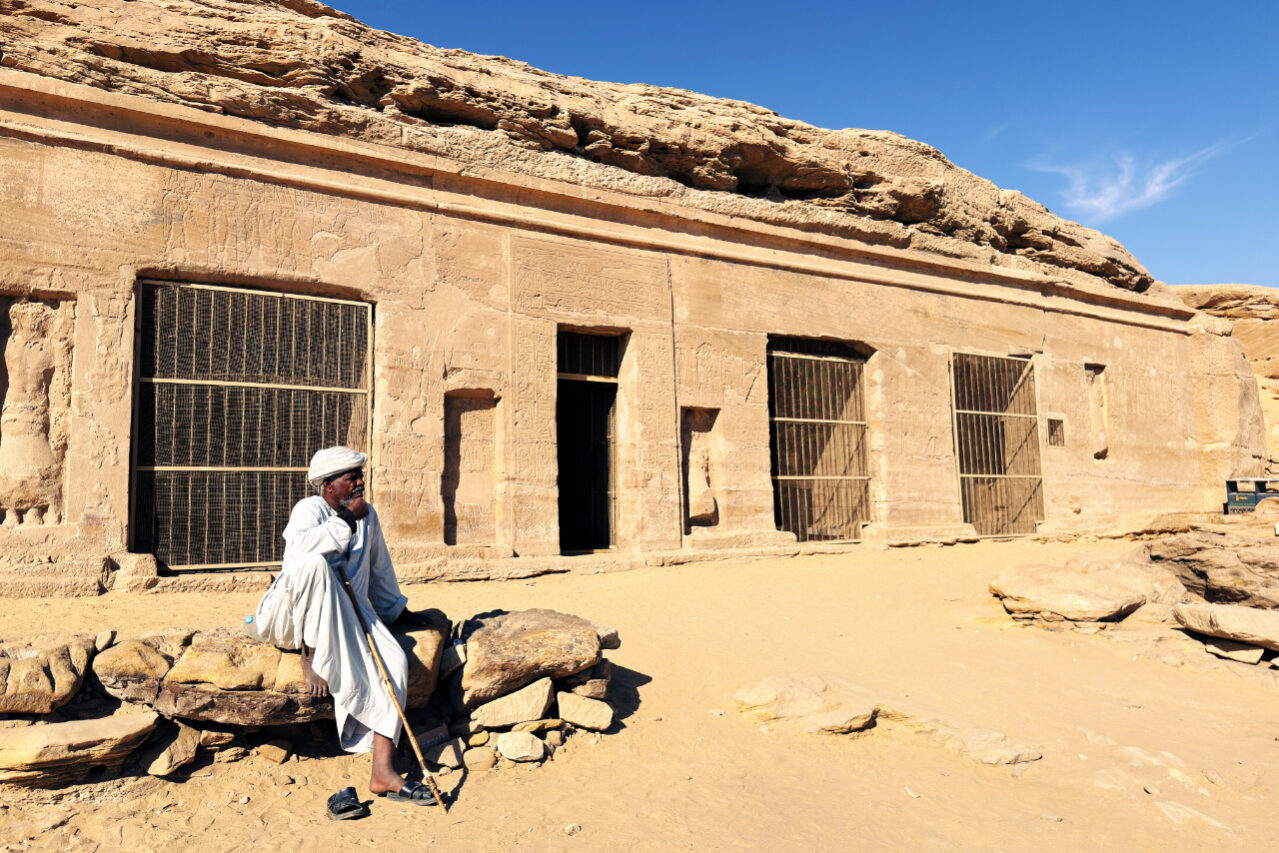Between the well-known temples of Kom Ombo and Edfu lies a quiet stretch of river that few travelers ever stop to see. The cliffs rise high on either side, carved by both nature and ancient hands. Birds circle above the sandstone walls, and the only sounds are the lapping of the Nile and the soft rustle of the wind. This is Gebel el Silsila, a sacred quarry, a spiritual sanctuary, and one of the Nile Valley’s most evocative hidden treasures.
While large cruise ships sail straight past, our dahabiya anchors gently along its shore. Guests step directly from deck to sand, following in the footsteps of the very workers who helped build Egypt’s greatest temples. There are no crowds here, no stalls or noise, just the serene echo of history preserved in stone.
Where Egypt’s Temples Were Born
During Egypt’s New Kingdom, the cliffs of Gebel el Silsila supplied the sandstone for some of the most magnificent monuments ever built. From Karnak and Luxor Temples to Kom Ombo and Edfu, countless blocks were cut and transported downriver from this very site. Every groove and chisel mark visible today is a direct connection to those ancient craftsmen.
Archaeologists have found the names of quarry workers and priests carved into the walls, humble yet enduring signatures left beside royal inscriptions. They remind us that Egypt’s grandeur was built not only by kings but also by the thousands of skilled laborers who transformed these cliffs into the foundation of civilization.
Walking among the old quarry faces, you can still imagine the rhythmic sound of hammer and wedge, the shouts of men hauling stone toward the riverbank, and the creak of wooden barges waiting to be loaded for their journey north.
“Every block tells a story here — not of gods and pharaohs, but of the hands that built Egypt.”
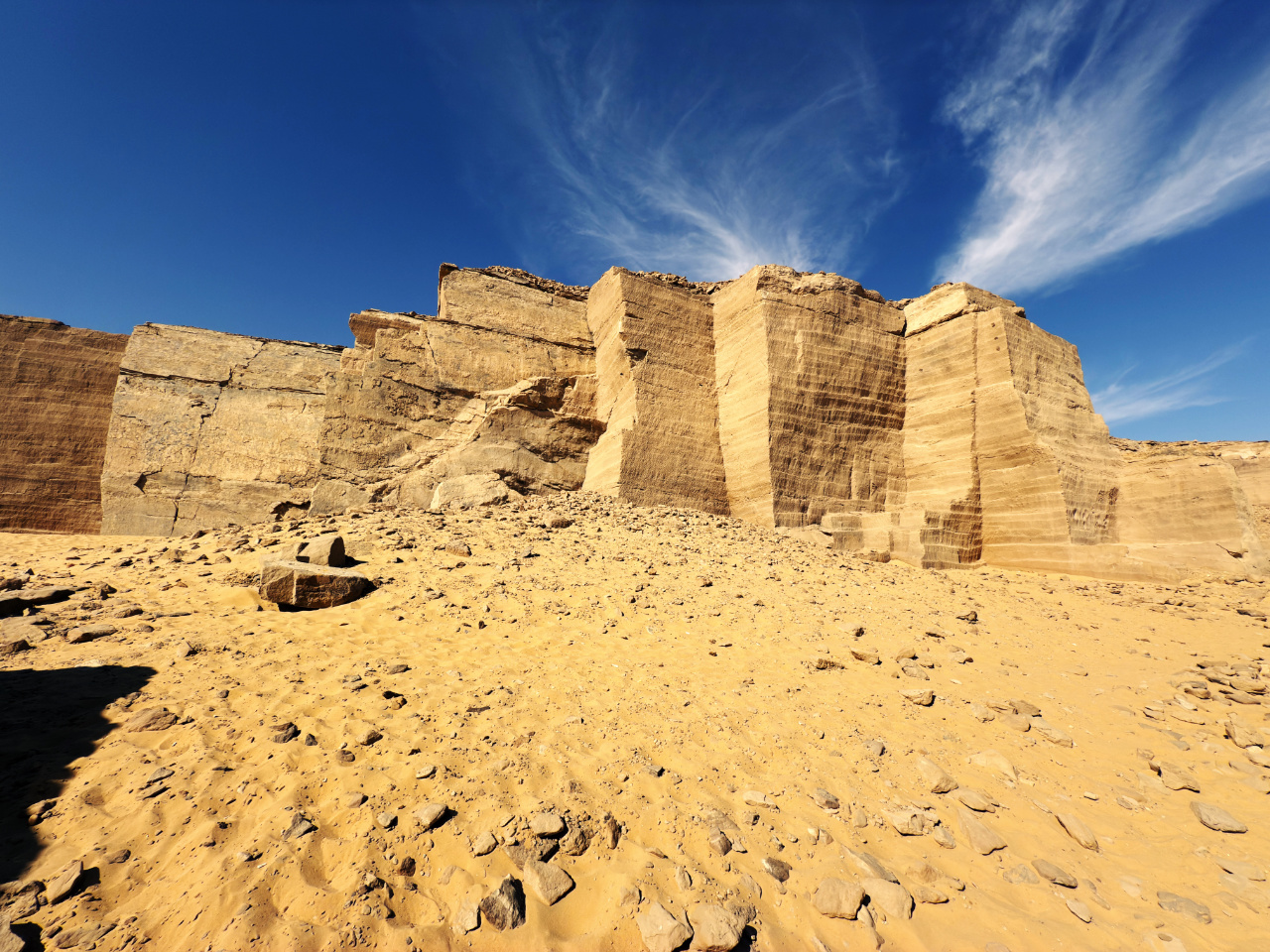
A Sacred Landscape
Beyond its practical role, Gebel el Silsila held deep spiritual meaning for the ancient Egyptians. Here, where the Nile narrows dramatically, they believed the river’s divine power was concentrated. Temples and shrines were carved directly into the cliffs to honor Sobek, the crocodile god associated with fertility and the life-giving floods.
As you explore the site, you’ll find small rock chapels dedicated to other deities as well, Amun-Ra, Hapi, and Khnum, guardians of the Nile’s annual renewal. The walls are etched with hieroglyphs still sharp after millennia, scenes of offerings and prayers to ensure that the river would rise and bless the land once more.
The air feels charged with quiet reverence. It’s easy to understand why ancient priests once came here to give thanks to the Nile, the eternal heart of Egypt.
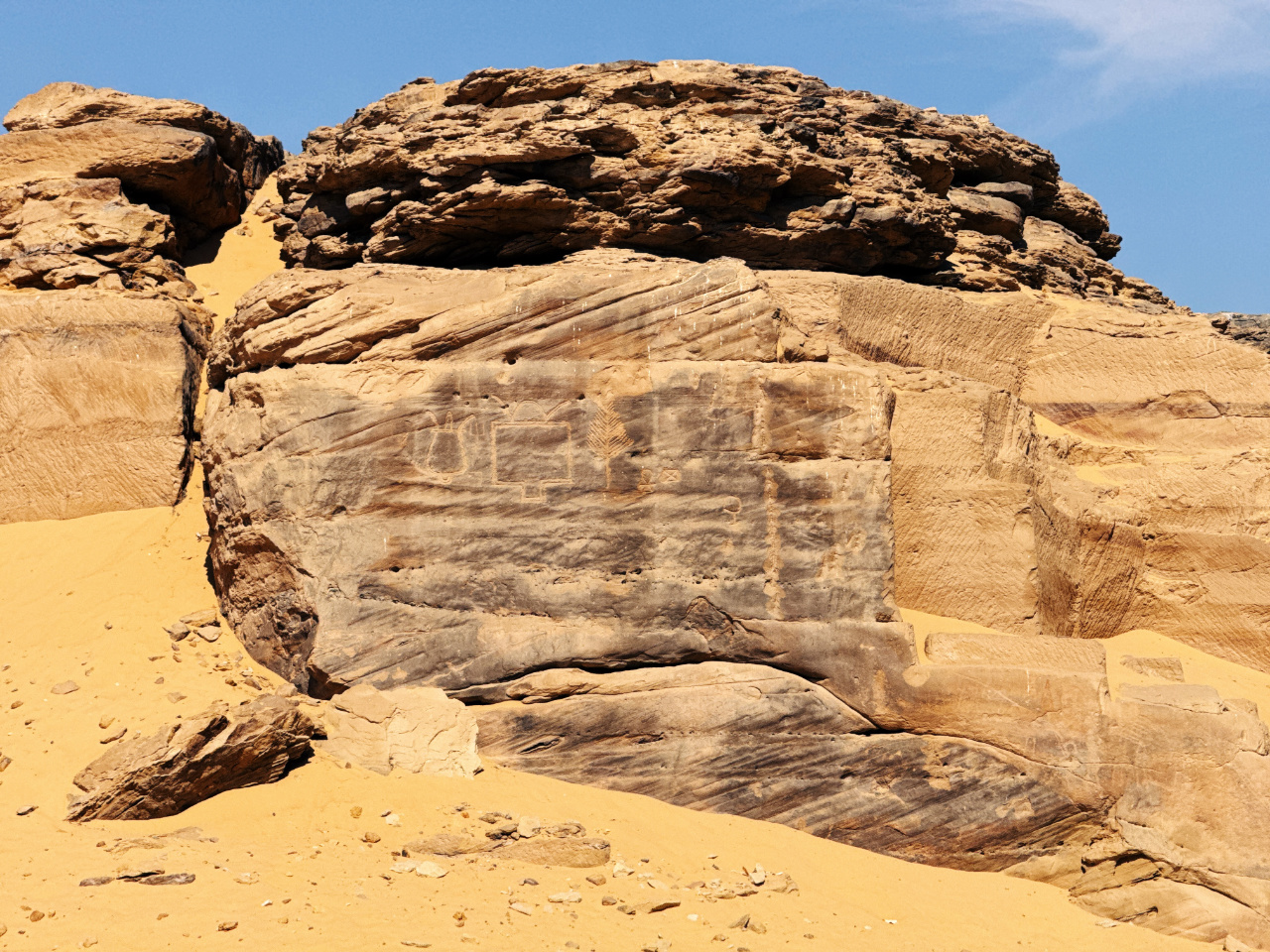
Visiting Gebel el Silsila with a Dahabiya
One of the great privileges of dahabiya travel is the ability to stop at places like this, locations inaccessible to the large cruise liners. When our sails catch the wind and we drift toward Gebel el Silsila, there’s a sense of timelessness, of stepping out of the present and into the rhythm of the river itself.
Our guests disembark directly onto the sandy bank, guided by our Egyptologist to the first rock-cut shrines. The path winds between cliff faces, ancient inscriptions, and hidden chambers overlooking the Nile below. With no tour buses or loudspeakers, the silence allows every detail to sink in, the warmth of the stone under your hand, the faint scent of acacia trees in the breeze.
After the visit, many guests linger on deck, sipping tea as the sun sets behind the golden cliffs. It’s a simple but unforgettable moment, watching the same sandstone glow that once illuminated the eyes of ancient quarrymen finishing their day’s work.
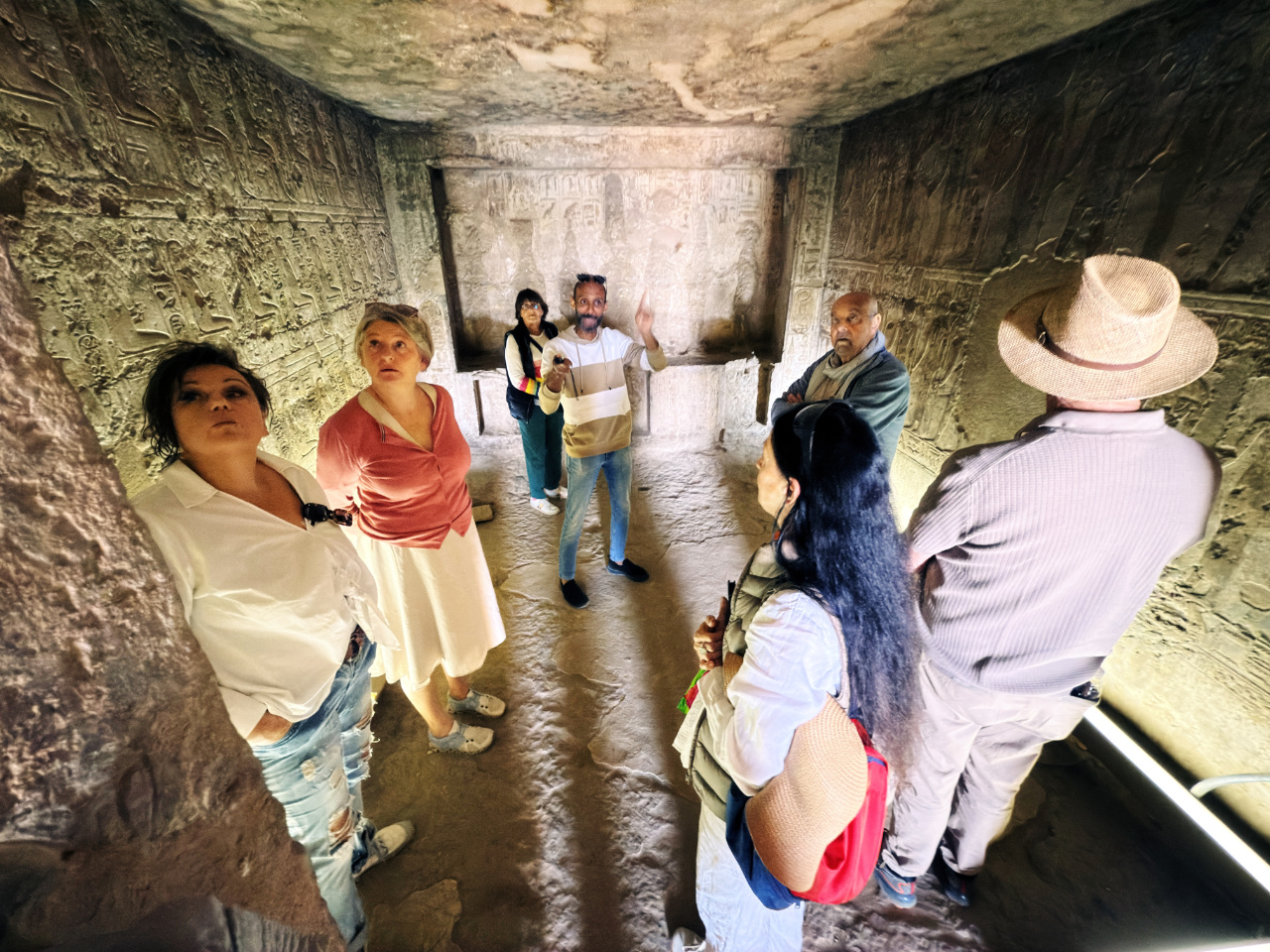
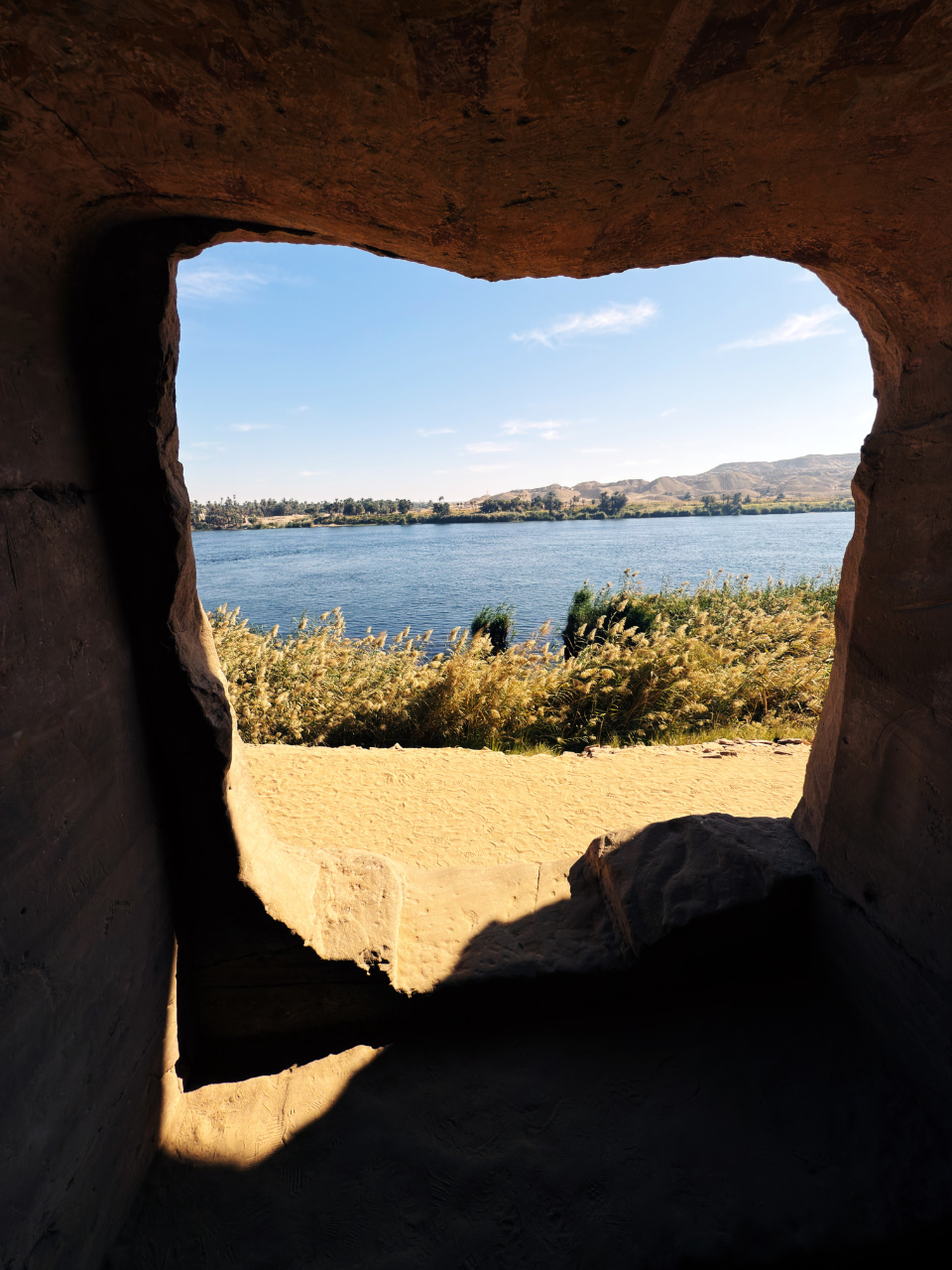
A Place for Reflection
More than a historical site, Gebel el Silsila feels like a meditation on time itself. Here, surrounded by stone and river, the connection between past and present feels almost tangible.
It’s an ideal place to pause, to journal, to sketch, or simply to be still. Many of our guests find that this quiet stretch of the Nile becomes one of the most meaningful parts of their journey. The calm encourages reflection, much like the slow pace of the dahabiya itself.
“Even the stones of Egypt have stories to tell — if you travel slowly enough to listen.”
Sailing into History
For us at Sail the Nile, Gebel el Silsila captures what a dahabiya voyage is truly about: discovery, authenticity, and connection. It’s not just another stop between temples, it’s a living reminder of Egypt’s craftsmanship, faith, and enduring relationship with the Nile.
When you stand there, surrounded by ancient carvings and cliffs that once shaped the country’s temples, you understand why we choose to sail this way, slowly, thoughtfully, and in harmony with the river that has sustained Egypt for thousands of years.
Join us on board and experience Gebel el Silsila for yourself — a hidden chapter of Egypt’s timeless story, waiting quietly along the banks of the Nile.
